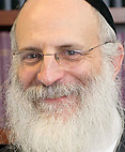Celecoxib inhibits prostate cancer growth: Evidence of a cyclooxygenase-2-independent mechanism Journal Article
| Authors: | Patel, M. I.; Subbaramaiah, K.; Du, B.; Chang, M.; Yang, P.; Newman, R. A.; Cordon-Cardo, C.; Thaler, H. T.; Dannenberg, A. J. |
| Article Title: | Celecoxib inhibits prostate cancer growth: Evidence of a cyclooxygenase-2-independent mechanism |
| Abstract: | Purpose: Selective cyclooxygenase-2 (COX-2) inhibitors may suppress carcinogenesis by both COX-2-dependent and COX-2-independent mechanisms. The primary purpose of this study was to evaluate whether celecoxib or rofecoxib, two widely used selective COX-2 inhibitors, possess COX-2-independent antitumor activity. Experimental Design: PC3 and LNCaP human prostate cancer cell lines were used to investigate the growth inhibitory effects of selective COX-2 inhibitors in vitro. To complement these studies, we evaluated the effect of celecoxib on the growth of PC3 xenografts. Results: COX-1 but not COX-2 was detected in PC3 and LNCaP cells. Clinically achievable concentrations (2.5-5.0 μmol/L) of celecoxib inhibited the growth of both cell lines in vitro, whereas rofecoxib had no effect over the same concentration range. Celecoxib inhibited cell growtli by inducing a G1 cell cycle block and reducing DNA synthesis. Treatment with celecoxib also led to dose-dependent inhibition of PC3 xenograft growth without causing a reduction in intratumor prostaglandin E2. Inhibition of tumor growth occurred at concentrations (2.37-5.70 μmol/L) of celecoxib in plasma that were comparable with the concentrations required to inhibit cell growth in vitro. The highest dose of celecoxib led to a 52% reduction in tumor volume and an ∼50% decrease in both cell proliferation and microvessel density. Treatment with celecoxib caused a marked decrease in amounts of cyclin D1 both in vitro and in vivo. Conclusions: Two clinically available selective COX-2 inhibitors possess different COX-2-independent anticancer properties. The anticancer activity of celecoxib may reflect COX-2-independent in addition to COX-2-dependent effects. ©2005 American Association for Cancer Research. |
| Keywords: | controlled study; human cell; dose response; nonhuman; cell proliferation; mouse; animals; mice; animal tissue; cell growth; tumor volume; animal experiment; animal model; membrane proteins; antineoplastic activity; cancer cell culture; tumor xenograft; tumor cells, cultured; drug selectivity; prostate cancer; prostatic neoplasms; cancer inhibition; mice, nude; celecoxib; cyclooxygenase 2 inhibitor; cyclooxygenase 2 inhibitors; pyrazoles; sulfonamides; cyclooxygenase 2; rofecoxib; cyclooxygenase 1; prostaglandin e2; transplantation, heterologous; drug blood level; cyclin d1; microvasculature; cell cycle g1 phase; dna synthesis inhibition; concentration response; sulfones; lactones; prostaglandin-endoperoxide synthases; cyclooxygenase inhibitors |
| Journal Title: | Clinical Cancer Research |
| Volume: | 11 |
| Issue: | 5 |
| ISSN: | 1078-0432 |
| Publisher: | American Association for Cancer Research |
| Date Published: | 2005-03-01 |
| Start Page: | 1999 |
| End Page: | 2007 |
| Language: | English |
| DOI: | 10.1158/1078-0432.ccr-04-1877 |
| PUBMED: | 15756026 |
| PROVIDER: | scopus |
| DOI/URL: | |
| Notes: | --- - "Cited By (since 1996): 121" - "Export Date: 24 October 2012" - "CODEN: CCREF" - "Source: Scopus" |
Altmetric
Citation Impact
BMJ Impact Analytics
MSK Authors
-
 11
11Patel -
 612
612Cordon-Cardo -
 245
245Thaler
Related MSK Work


